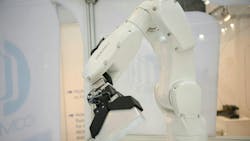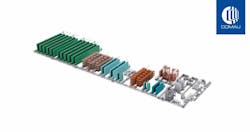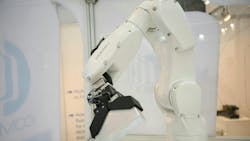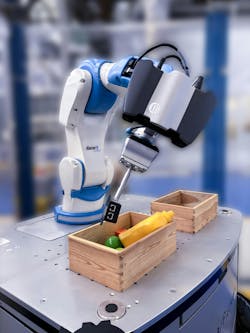Navigating the Electric Mobility Path with Solid-State Batteries
Behind the world’s shared CO2 emission targets and electric vehicle (EV) adoption goals lies the fundamental need for increasingly advanced power technologies and new production processes. From a technological standpoint, it can be argued that the backbone of electric mobility is the power technology that propels it. And while traditional lithium-ion batteries have been the mainstay of EVs, the industry is rapidly progressing toward higher-capacity solutions.
Emerging technologies such as solid-state batteries promise even greater energy density and faster charging times. This, in turn, will help enhance the range and performance of EVs, making them more viable for a broader range of consumers. However, the most immediate challenge in the transition to electric mobility is to consolidate a reliable and cost-effective manufacturing strategy. This involves not only the production of advanced batteries and drivetrains but also the establishment of robust supply chains and manufacturing processes.
What is Driving Battery Demand?
The pan-European goal of creating an autonomous supply chain is expected to drive battery demand between now and 2030. Despite recent uncertainties about the rate of growth, the battery market—which includes cells, modules, packs and electric motors—is estimated to exceed €170 billion by 2030. This prediction is based on internal estimates and corroborated by various market studies, and underscores the importance of achieving production scalability within the market.
Developing manufacturing processes that can produce high-quality batteries at scale while keeping costs down is another driving factor. This is why some companies in this sector are developing extensive expertise in electrification, enabling them to experiment with cutting-edge technologies and anticipate many trends in e-Mobility.
There are companies that have helped automate the production of next-generation sodium-based battery cells, one example being a powerful solution for end-of-line battery disposal and recycling. The latter was realized as part of the Flexible Battery Dismantling project within EIT Manufacturing, a dedicated innovation community funded by the European Union within the European Institute of Innovation and Technology (EIT).
Indeed, access to locally sourced cell assembly equipment and technology will help Europe’s battery producers enhance productivity, reduce costs, and improve safety and sustainability.
The Stages of Cell Formation
Cell formation encompasses the core processes that transform assembled components into stable, electrically charged battery cells. A crucial phase in the battery manufacturing process, the first stage involves activating the electrochemical properties of the cells using a series of controlled charging and discharging cycles—the first of which initiates the electrochemical reaction.
The cells then undergo multiple cycles of charging and discharging, which together help form a solid electrolyte interphase (SEI) on the electrode surfaces. The SEI layer stabilizes the electrolyte and ensures the resilience of the battery. Throughout this phase it is necessary to closely monitor both the voltage and temperature to ensure the cells do not overheat or become subject to voltage spikes.
After the cells are activated and the SEI layer is formed, they are stored at a temperature of 40⁰C for several days to accelerate the aging process. The high temperature aging also serves to stabilize the cells before the rigorous testing phase, which involves exposing the cells to various stress conditions such as high temperatures, high charge/discharge rates and deep discharges to both ensure they are safe and to evaluate their reliability. This level of quality control also helps guarantee that the cells meet industry standards and specifications.
Cell formation is integral to the development and manufacturing of high-quality batteries and plays an increasingly important role in delivering reliable and efficient energy storage solutions. The fact that these end-to-end cell formation systems can now be sourced locally from a renowned leader in industrial automation represents an important step toward advancing the European battery manufacturing industry.
An Example: Prismatic Assembly—from Cell Prep to Testing
Moving from cell formation to battery manufacturing, the automated production of cells, modules, packs and batteries requires an optimal combination of carefully designed processes and technologies tailored to the unique characteristics of each project. This is largely due to the underlying cell and structure complexity. For example, the assembly line for prismatic cells is typically structured in 4 main areas, with the process beginning once the cells have been activated:
- Cell preparation
- Stacking
- Welding
- Testing.
The cells are first unloaded from the battery trays or bins, where they are controlled and subjected to different types of checks, including optical character verification (OCV) and the position of the poles. They then undergo various treatments based on their characterization. Naked cells undergo plasma treatment, which is a precursor to the wrapping process. If they are already wrapped, or painted, the plasma treatment is not necessary and thermal pads and glue can be directly applied. All this is ideally carried out quickly, with an average cycle time of a few seconds per cell.
During the stacking phase, the cells are coupled to form a packet, the size of which can vary from a half dozen to more than 20 cells. At this stage, the dimensions, the force and the positioning parameters of each cell are checked. It is also essential to verify that there are no short circuits. Plates are then added around the cells and pressed together to form the module. Once the busbars are attached, the newly created module moves to the welding phase.
Laser welding is the final assembly phase of the battery module and arguably one of the most delicate processes. This is due to the critical quality parameters that are required of the welded points. Verification of the points to ensure the absence of short circuits can be done with a high-voltage test. At the end of the test, the module is completed with busbar guards. Laser marking and labeling make the module unique and traceable, ready to be shipped to the battery pack assembly plant.
Testing and quality control are also performed at the battery level. Some companies are launching new technologies that use thermography and artificial intelligence to perform noninvasive automatic in-line testing and quality control. This technology is used to verify the electrical and mechanical performance of the soldered joints inside the assembled car battery, regardless of the type of module.
Designed for industrial-scale battery production, this new technology automatically evaluates surface defects and electrical resistance of soldered joints connecting individual battery cells. High electrical resistance, due to poor joint quality, can create high energy loss and generate heat. Increased joint temperature causes potential safety problems and reduces efficiency. By automatically evaluating each joint before final assembly, this can protect cycle times and save manufacturers time and costs.
Holistic Approach to Battery Solutions
From complete packs—such as those used in commercial vehicles—to individual modules and cells, some companies are adopting a dual path that combines standardized, easy-to-use production modules with a dedicated Design for Excellence engineering methodology. This approach is key to building state-of-the-art solutions that eliminate the need for modifications at later stages and allows the company to manage everything from prototyping and preproduction to mass production and end-of-life battery recycling.
Another benefit comes from considering the most crucial aspects of a project during the initial design phase, improving product optimization and reducing management costs, system complexity and time to market. This holistic approach ensures the delivery of complete solutions that pave the way for more efficient and sustainable battery technologies.
About the Author

Gian Carlo Tronzano
Head, e-Mobility Global Competence Center, Comau
Gian Carlo Tronzano is head of Comau’s e-Mobility Global Competence Center.




